Sharp X68000 Super
Related posts
Specs
- Full name: Sharp X68000 Super CZ-604C
- CPU: Hitachi HD68HC000 10MHz (m68k clone, later models had geniune Motorola chips)
- Release date: 1987 (first model release) 1991 ("Super" model)
- RAM: 2MB (expandable to 12MB)
- Storage: two 5.25" floppy drives (with soft eject buttons!), SCSI port for the hard optional hard drive
- Sound: YM2151 FM 8 channel chip (used in many arcade boards)
- Two I/O expansion slots
Background
This is definitely a computer I had on my dream list for a long time. Designed to be a powerful home game machine running games in an arcade quality + a fully fledged workstation, it wasn't as widely spread as, let's say, a PC-98. Due to notoriously bad PSUs and a few design quirks (that we will get to shortly) obtaining a fully working unit is very hard. Our today's guest was also listed as junk, not powering up, and the seller reported it "emits a weird, salty fish smell", which of course hints at the capacitors.
Overview and disassembly
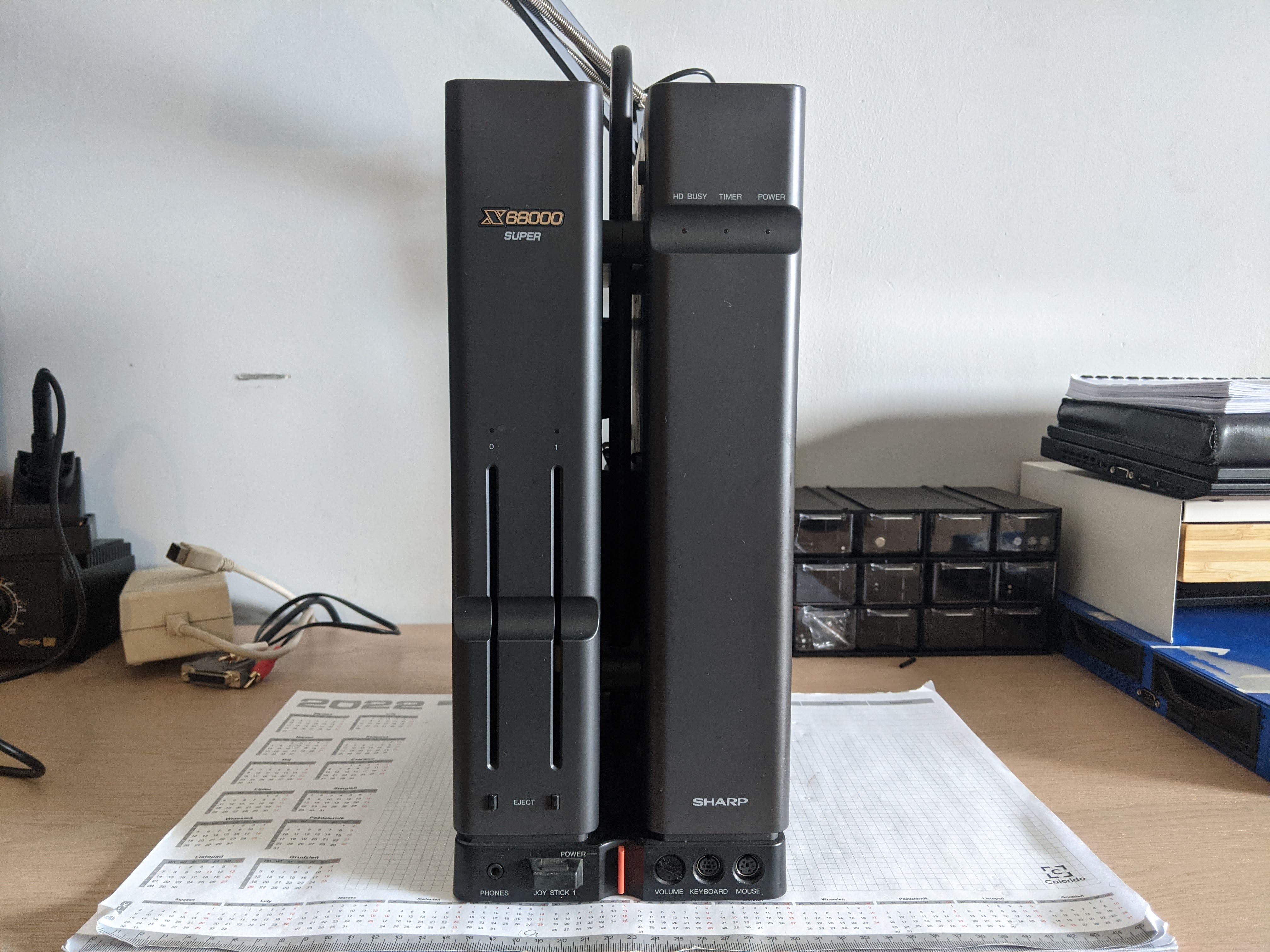
Sharp went with a very interesting design, sporting two vertical towers, connected internally by the daughterboard placed at the bottom, in the base of the computer. I call them "analog" and "digital" towers, since the left one contains the PSU, drives and the internal speaker, while the other houses the main motherboard, video daughterboard and the I/O expansion slots. There are a few noteworthy things here - soft power button, proprietary keyboard and mouse ports. I don't own those, I have seen a few keyboards for sale on Yahoo Auctions Japan, but they cost nearly as much as the computer itself and a mouse is pretty much unobtainable. Thankfully, there are DIY adapters (for PS/2 and USB) for it, so making them will be a part of this restoration project for sure. On the top there are two buttons, reset and... interrupt? Yes, from what I've found, it generates a non-maskable interrupt. What for?
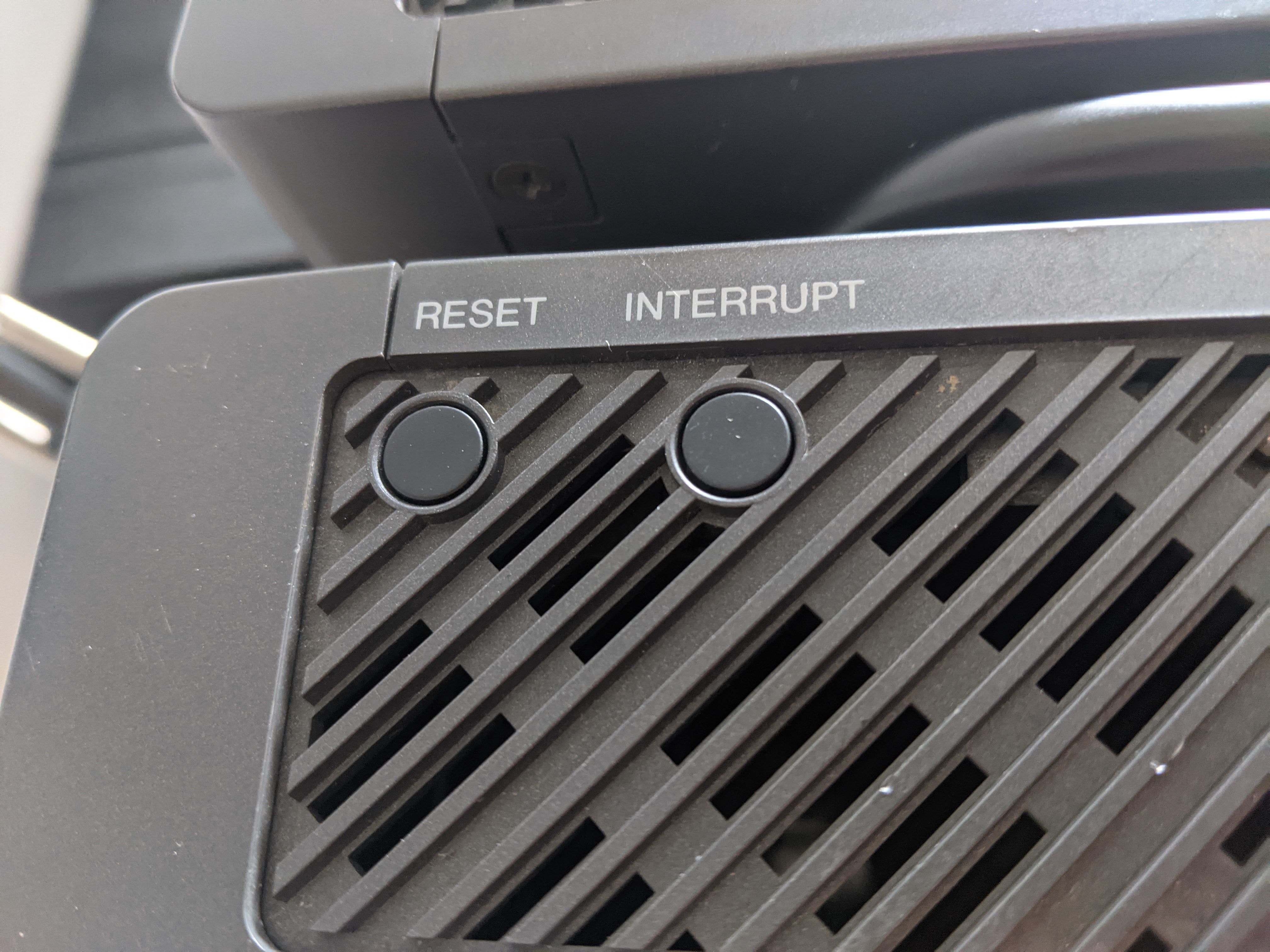
Overall, visually the unit is in a very nice condition aside of a few shallow scratches near the base. And dusty. So very, very dusty.
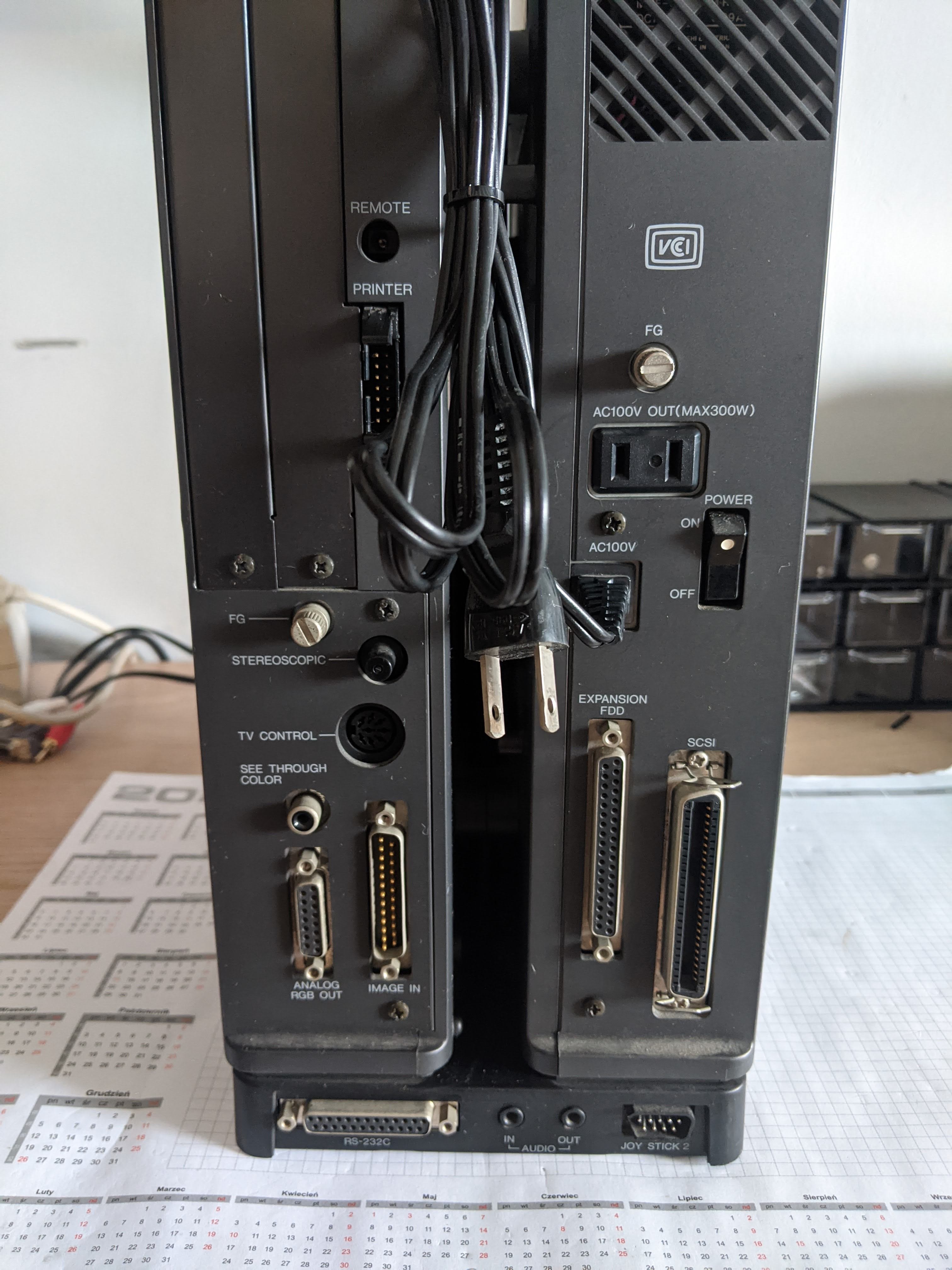
There's a lot of going on the back - we of course see some similar stuff, RS-232, audio jacks, RGB video output, SCSI port, printer... but the rest? Wild stuff.
- STEREOSCOPIC - It allows to plug in some kind of funky 3D glasses

- TV CONTROL, REMOTE - Sharp made a line of special monitors, designed to work with X68k. As far as I understand, they could be controlled by the computer itself and by the special remote. I don't have either of those, so can't test it.
- SEE THROUGH COLOR, IMAGE IN - Genlock? Prolly, cool!
On the top left there are two I/O slots, covered by those two pieces of metal. They allow you to plug expansion cards like additional RAM or MIDI boards without the need of opening the computer. And that's an awesome thing, because opening this machine up is... not the easiest thing in the world.
Sides of the case slide backwards and then you can take it off, but you need to be careful, because there are some retaining clips holding the front cover and side panels together, so you need to give them a gentle push first.
The power supply unit
As I mentioned, the PSUs in X68000 are bad. Some people say it's due to the (innovative back in the day) soft power reset, some say it just has low quality capacitors... I haven't looked into it yet so what do I know? Well, one thing I do know, is that this unit has a very unhappy, blown fuse:

But is that all? In the bottom right corner of the photo you can see some brown gunk. In fact, that part of the board is covered in it:
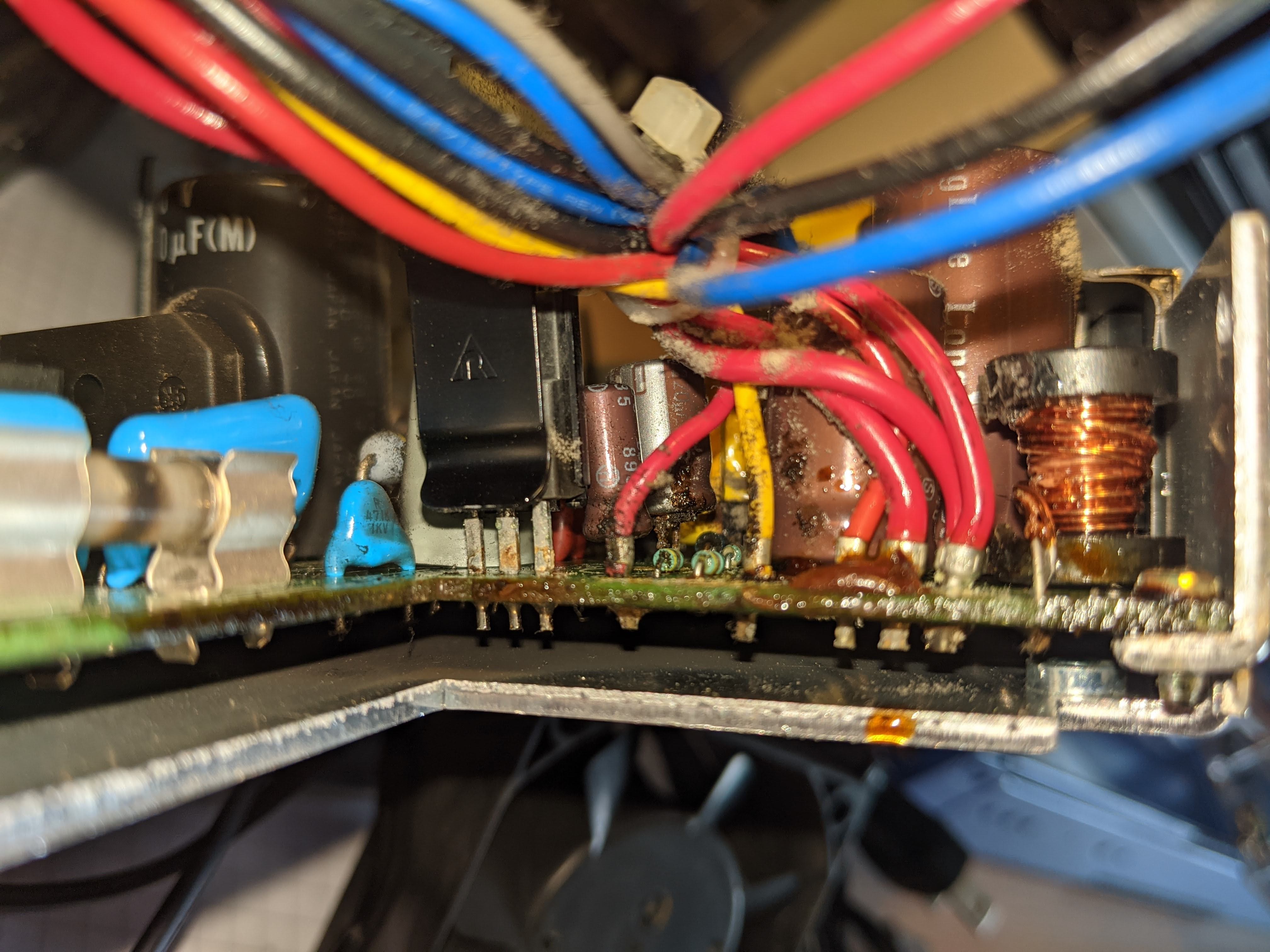
All of this plus of course the fact that I am in Europe, so will need a step-down transformer to even plug it in makes me think the PSU is not really worth it and I'll be better off just replacing it with the Pico PSU altogether. There is a neat adapter board on Github that allows you to put in place of the original PSU, so it should look fine. While I am waiting for the board to arrive, I could look into the old PSU and try to get it working, but no promises.
Floppy drives
Not gonna go into them right now, since I have no way to test them anyway. I hope they work, since because of the additional signals for the soft-eject mechanism, I've heard they are a big pain to replace/emulate. Let's go back to them later, when I will be able to power on the computer.
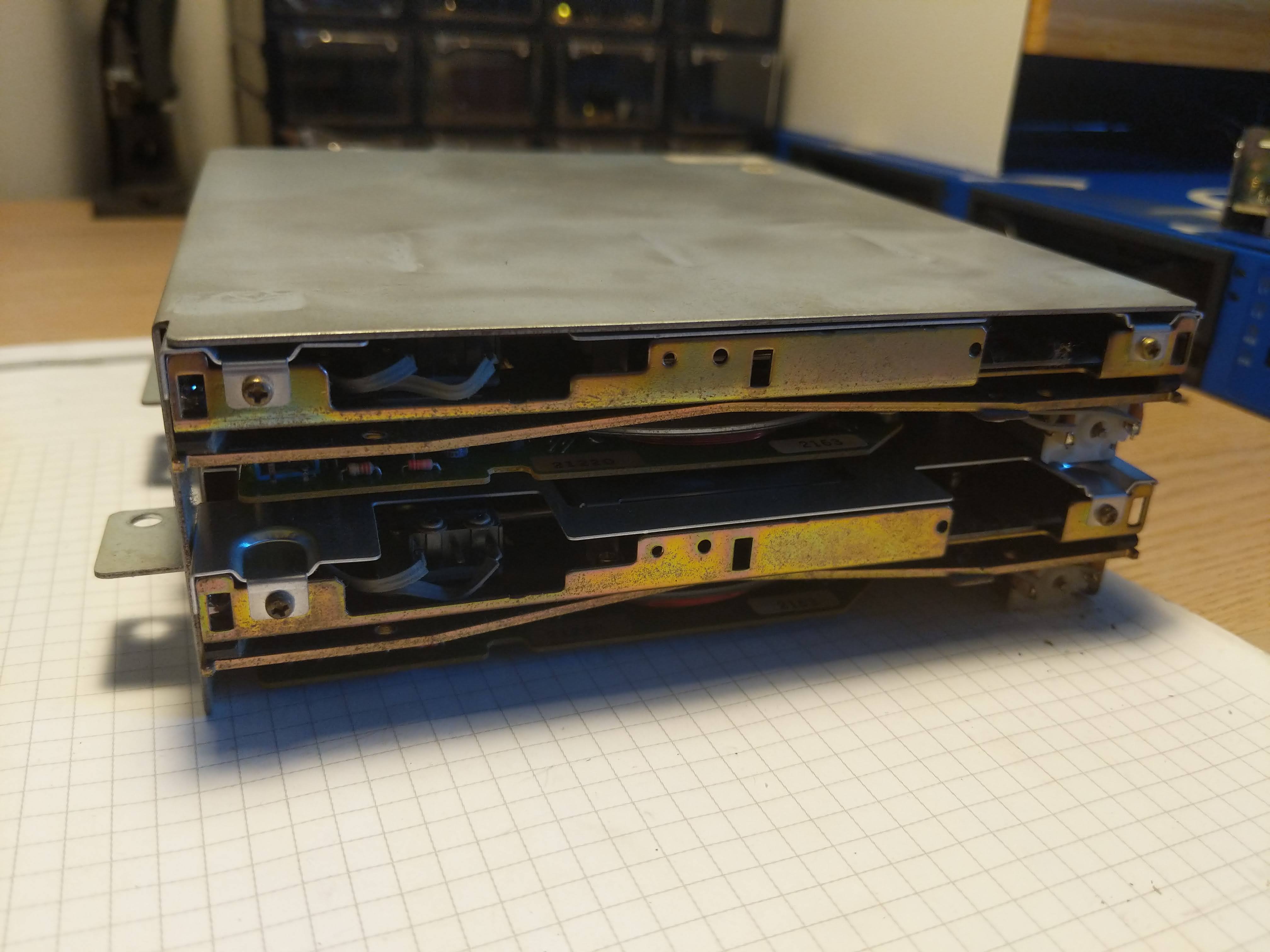
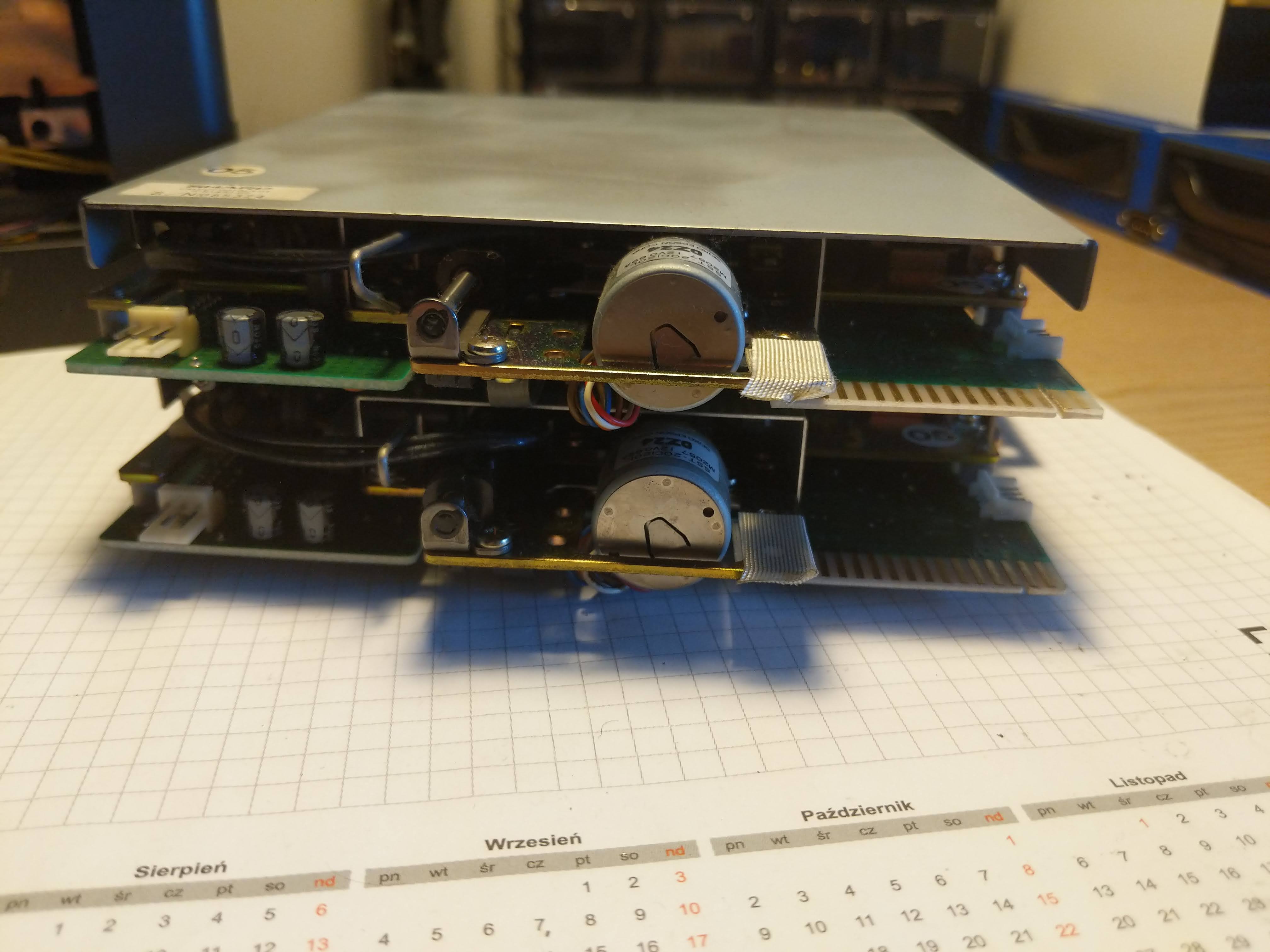
The motherboard
After peeling layers upon layers of RF shielding, I managed to take the main board out:
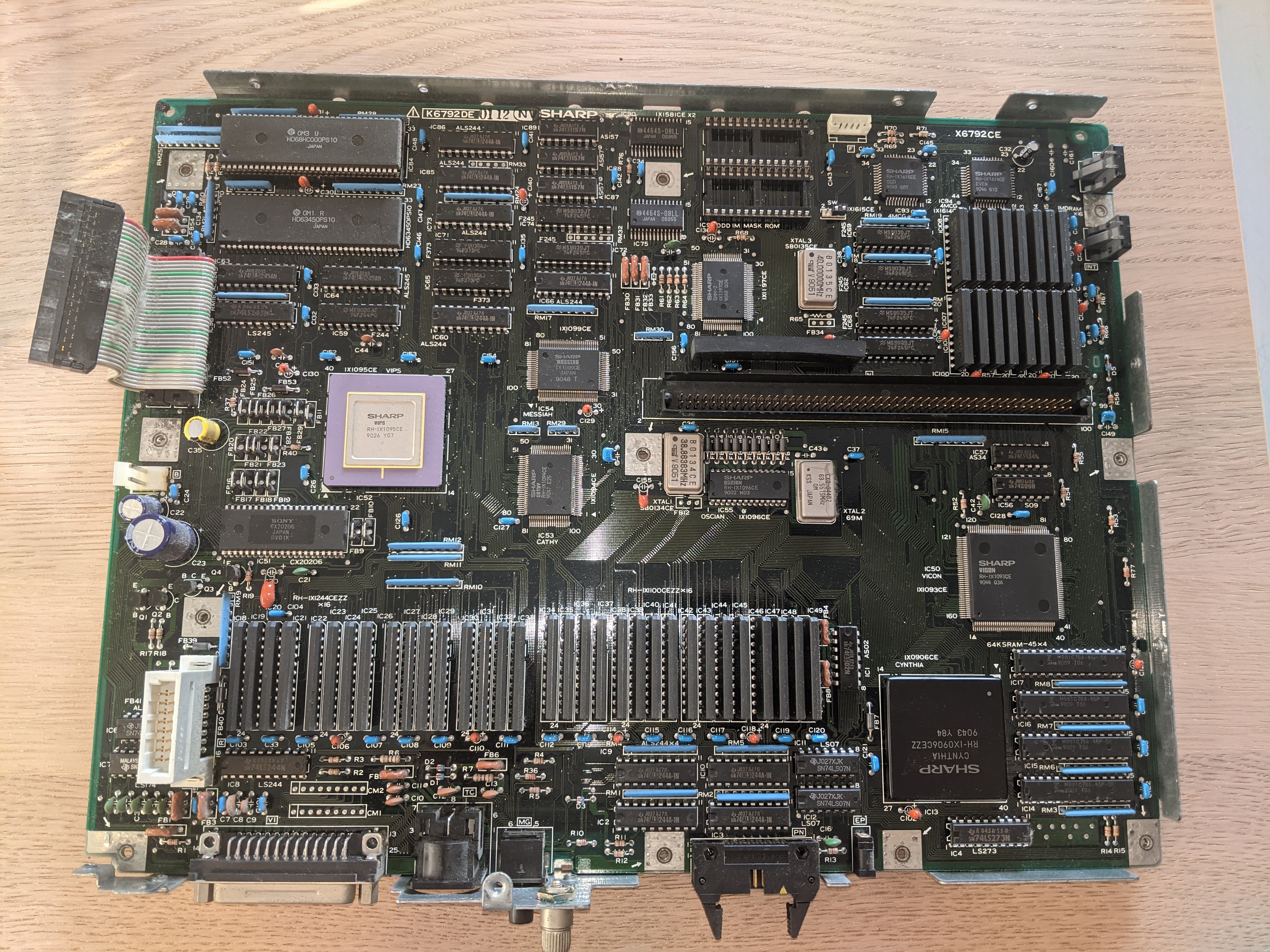
So, what do we have here? In the top left corner we of course can see the socketed CPU and the CMOS DMA controller underneath. There's also quite a lot of memory sprinkled throughout the board, most of it in SIP packages - 2MB of general memory, VRAM and SRAM that holds computer settings and some additional drivers. Long, black slot on the right is where the adapter for I/O expansion cards is connected, it looks like this:

Small, white connector near the left edge is where the video daughterboard plugs in.
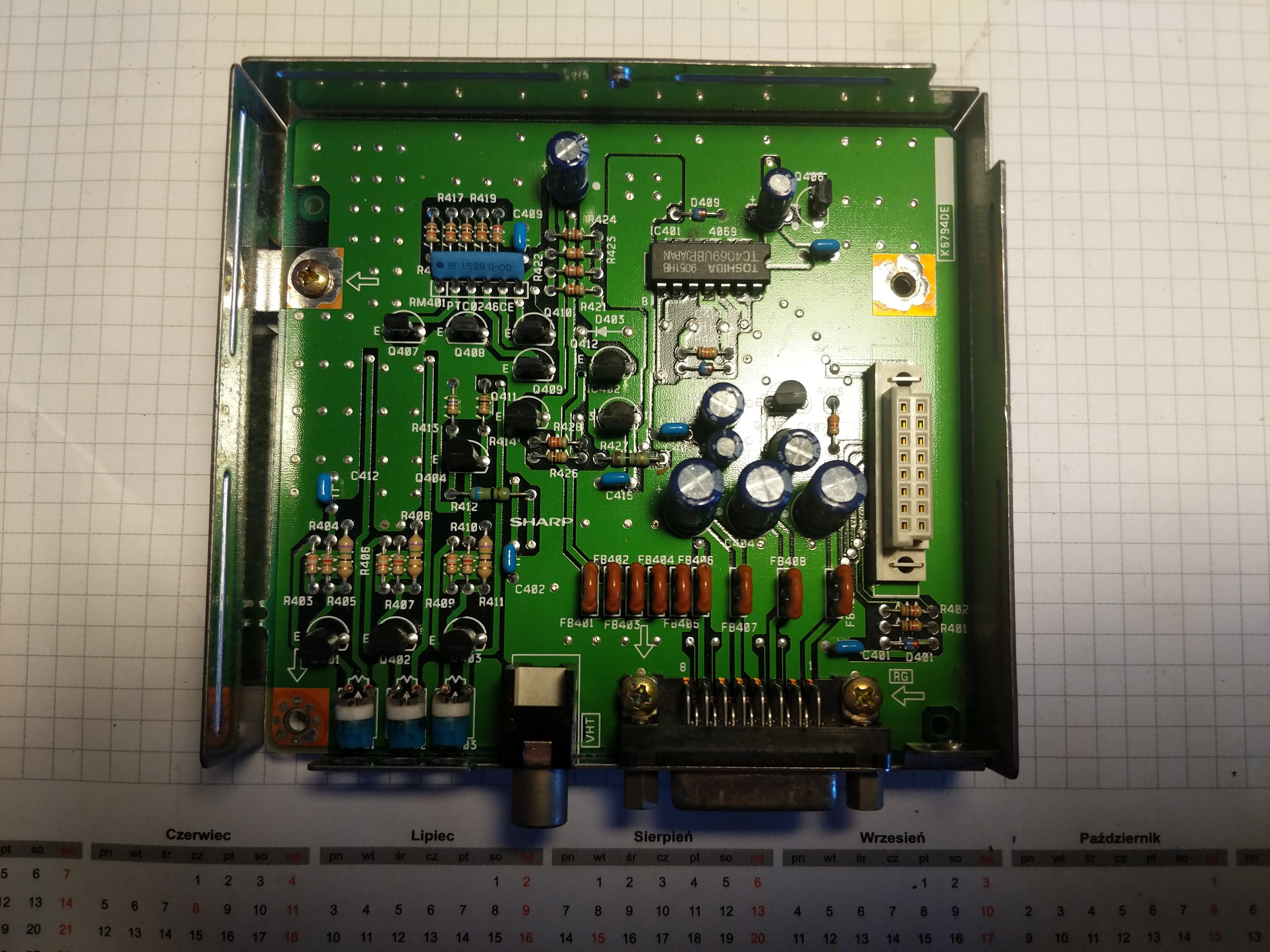
It's not particularly interesting, just some analog stuff. Most of the video generation and conversion happens on the main board by the VIPS custom chip and Sony CX20206 RGB converter (IC 51, right under the VIPS).
Speaking of custom ICs, Sharp made quite a few of them, as they are the main reason behind X68k's stunning graphical capabilities. I'm still in the process of going through the documentation, but so far I know that:
- As I said earlier, VIPS is the main video controller
- VICON (it still annoys me that this isn't the actual video controller, I mean, it's in the name!) - the "CRT controller", something to do with these dedicated Sharp monitors I mentioned earlier?
- Cynthia is a dedicated sprite controller (fun fact, in the original model, they didn't manage to fit all Cynthia's logic into one IC, so it was splitted into two of them, Cynthia and Cynthia junior - pic from wikimedia)

- Cathy (Reserve in old models) - is a "video data selector", interfacing the video RAM, ensuring access to the correct part of it (graphics/text/sprites)
- Messiah - probably my favourite name out of all custom chips. All English sources just state it's a "system controller", but nothing else. DMA controller? Maybe? Will need to look at the schematics.
- Ohm2 - a memory controller. Not much to say about it, besides the fact that in the original model it was called "ET" and in the Pro model they renamed it to... mcCoy? Like Leonard mcCoy from Star Trek? Huh.
There is one more custom IC, PEDEC. It's an I/O controller that lives on the daugherboard located on the bottom of the computer, connecting both towers together:
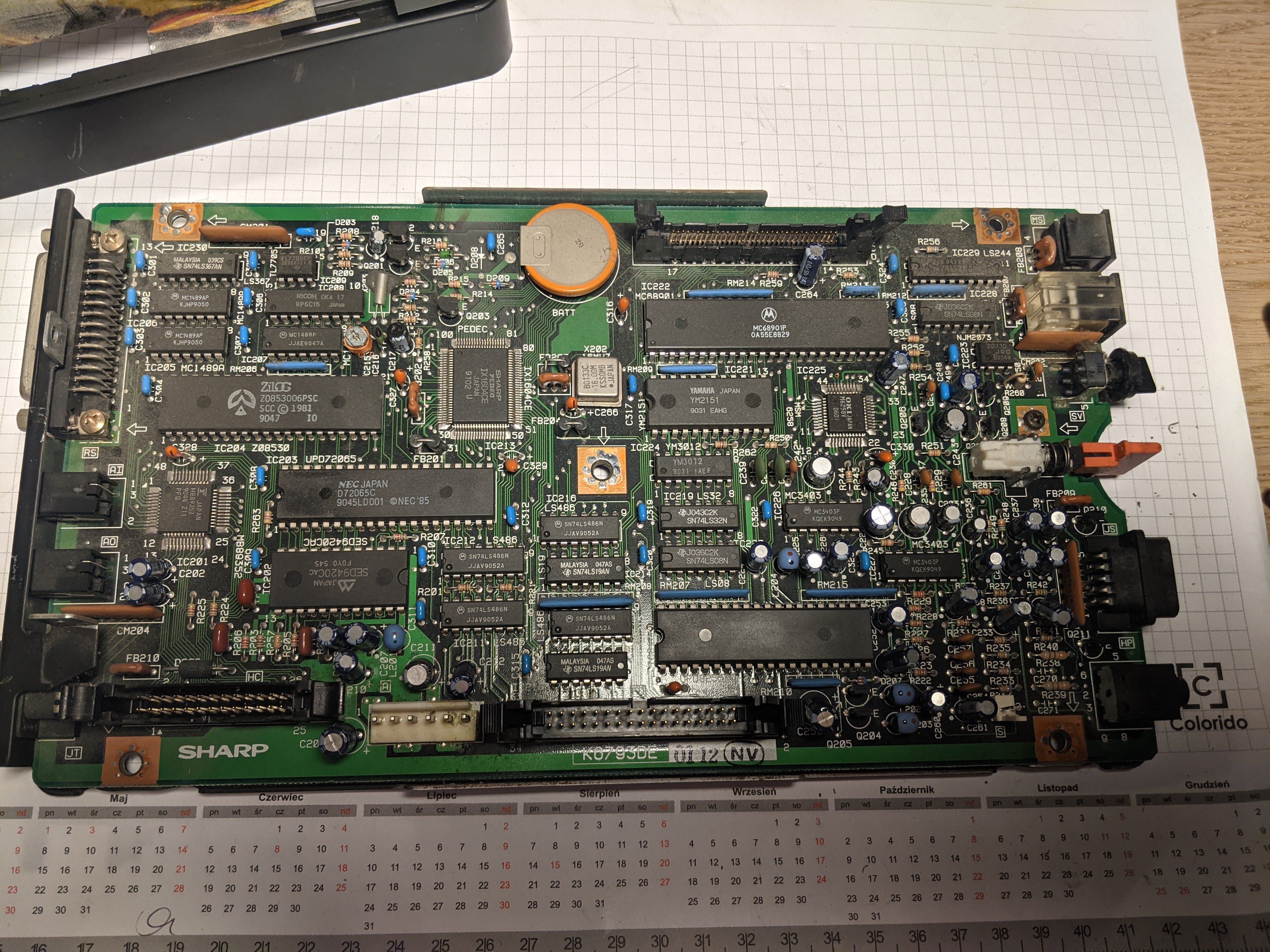
Big Zilog branded IC on the left is the serial controller, next to it is the floppy drive controller, NEC D72065. Small square chip on the left is the Fujitsu MB89352 SCSI controller. The chip a the bottom with unreadable markings is NEC 8255 PPI, here working as a printer controller. Right above it are three sound chips, Yamaha YM2151 (FM), Yamaha YM3012 (DAC), Oki MSM6258V (Pulse-Code Modulation) and finally a peripheral controller, Motorola 68901.
What's next?
As I said, the power supply is dead and I can't do much. Right now I'm waiting for JLC to send me the adapter board for the Pico PSU and the GAL-based RAM expansion I've found on Github, god bless open hardware. And after that? I don't see any corrosion, broken traces or anything like that, so I hope it will turn on after putting in a new PSU and recapping all boards. If yes, then I will have to make an adapter for a keyboard, test the drives, get a SCSI2SD for it... If I am not so lucky then well, we will see. As long as all custom ICs are okay, it should be repairable. Stay tuned for that!